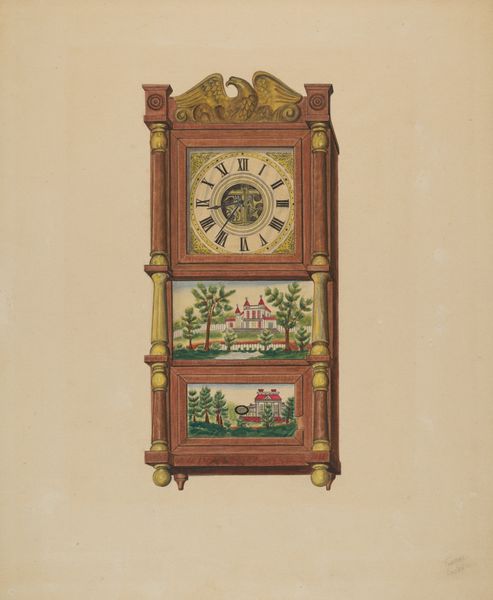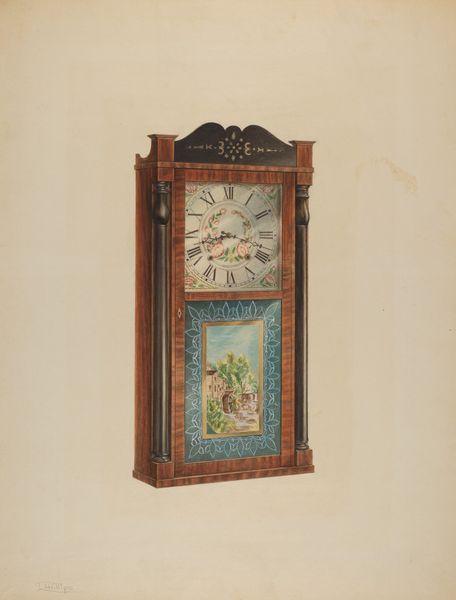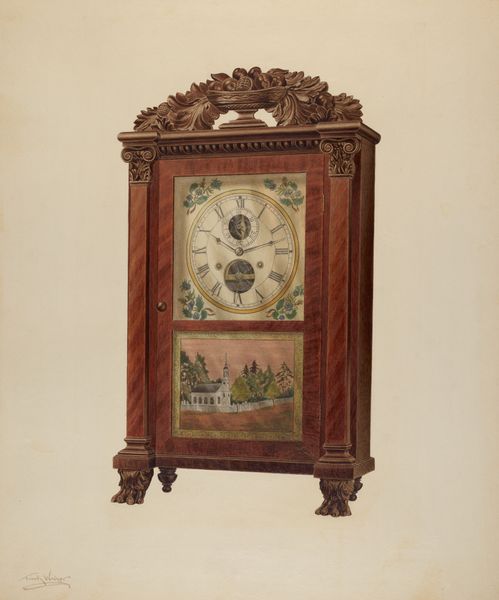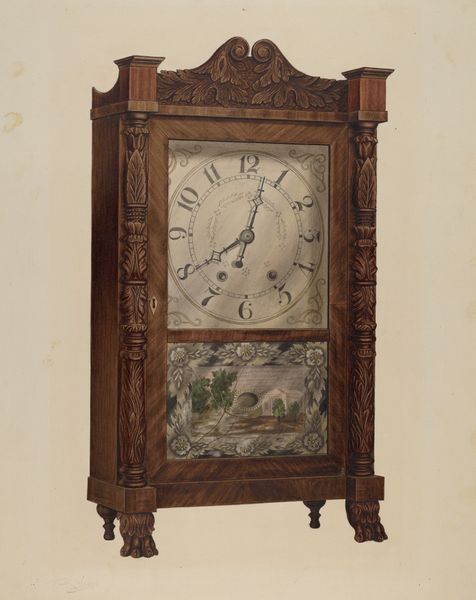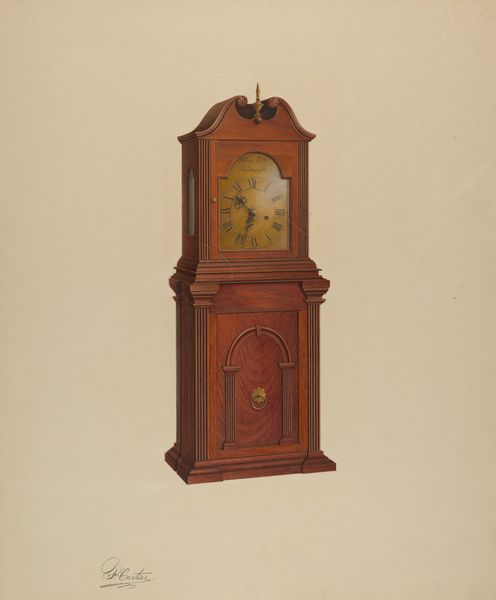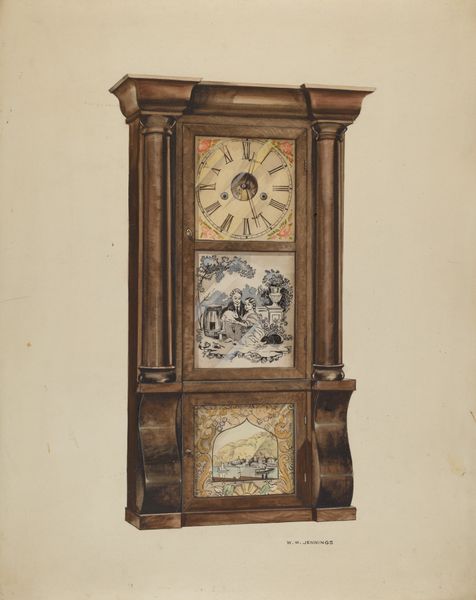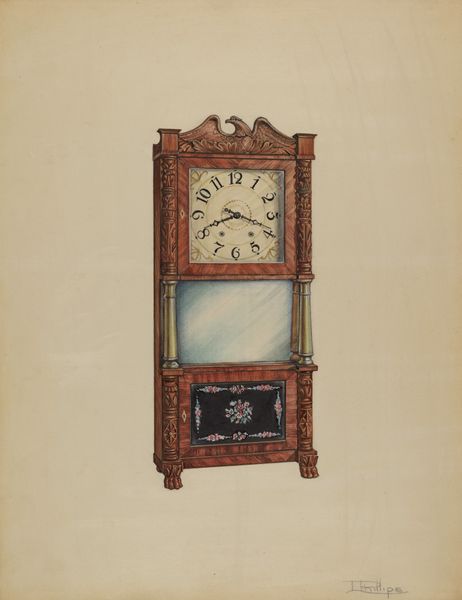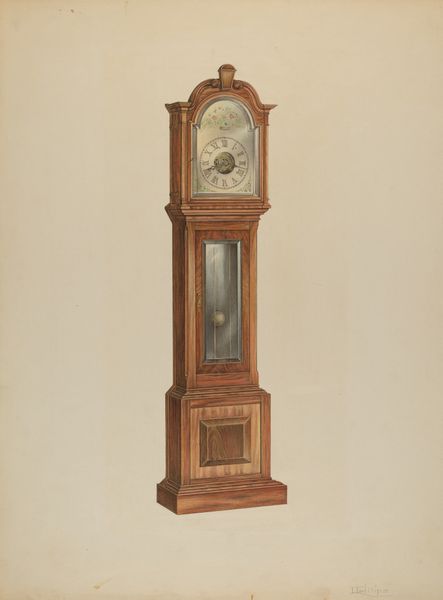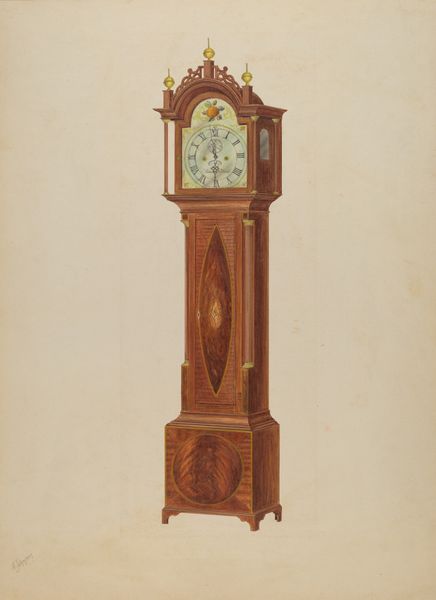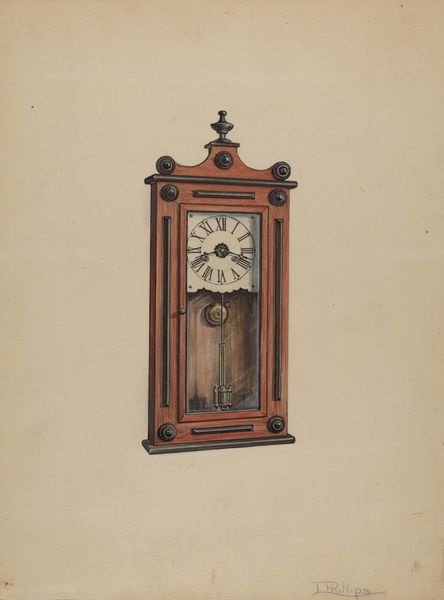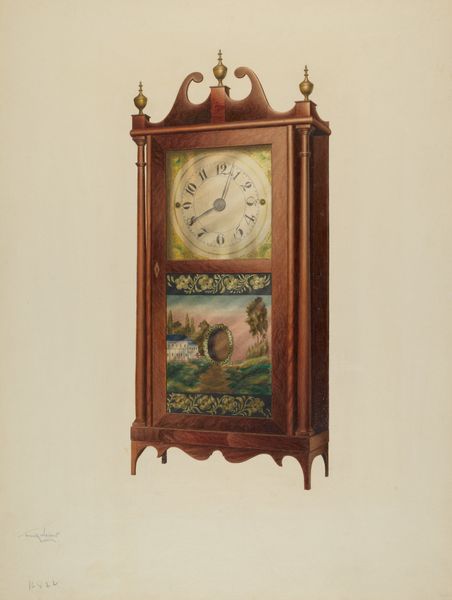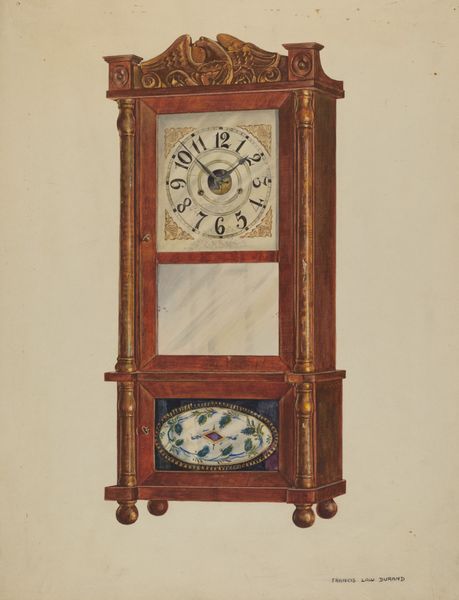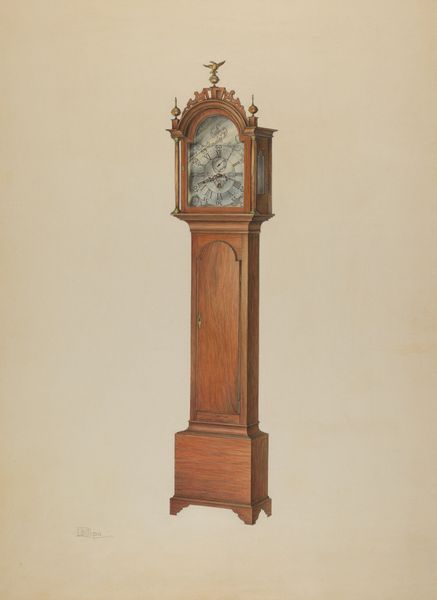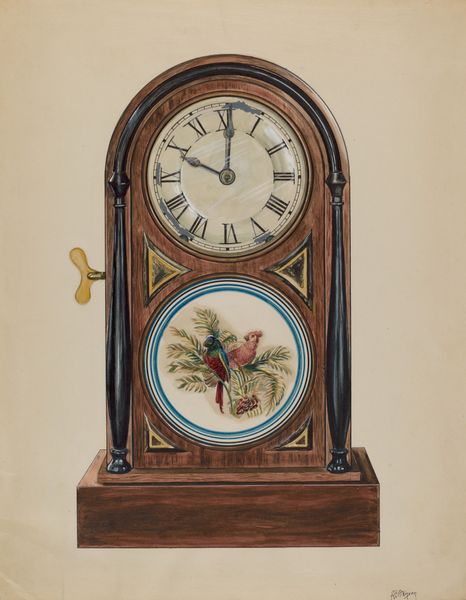
drawing, painting, ceramic, watercolor
#
drawing
#
painting
#
ceramic
#
watercolor
#
ceramic
#
decorative-art
#
watercolor
Dimensions: overall: 43 x 34.1 cm (16 15/16 x 13 7/16 in.) Original IAD Object: none given
Copyright: National Gallery of Art: CC0 1.0
Curator: Before us is a work by Frank Wenger from about 1938. It’s entitled "Mantel Clock" and appears to be a mixed-media piece incorporating drawing, painting, ceramic, and watercolor elements. What are your first impressions? Editor: My first impression is its inherent tension, a certain…domestic anxiety? A decorative object trying too hard to reassure itself through a hodgepodge of art media and pictorial imagery. The combination of materials strikes me as a reflection of material insecurity or at least aesthetic indecisiveness. Curator: I find it quite compelling how Wenger uses the form of a clock—an object laden with symbolism of time and mortality—as a canvas for exploration. Notice how he embellishes the clock face with floral motifs, almost like a fleeting Eden. And below, there's a landscape hinting at classical architecture, perhaps evoking idealized memories. Editor: But this idyllic scenery is placed on the base, which suggests something literally grounded, while the time-telling aspect is embellished, obfuscated with visual distractions. What do you read in that visual layering and those stylistic juxtapositions? Curator: The lower panel presents a conventional scene—sun, river, buildings— but the clock's hands suggest time ticking onward, even within that supposed timeless vista. It speaks of cultural memory clashing with relentless modernity. Editor: Perhaps Wenger also sought to legitimize craft within the framework of "high art" by integrating it with the practical function of keeping time. In his use of potentially lower value or easily sourced ceramic, do you find echoes of any craft production trends emerging in America at this time? Curator: Precisely, you raise a valuable point about value itself, since clocks represented middle-class aspiration. The applied decorations give the work folk-art echoes which democratizes notions of "fine" and functional design. By blending fine art with functional design, is Wenger creating a time capsule of the era’s aesthetic aspirations and socioeconomic tensions? Editor: A poignant question, that encapsulates the enduring significance of the mantel clock through material examination and aesthetic questioning!
Comments
No comments
Be the first to comment and join the conversation on the ultimate creative platform.
